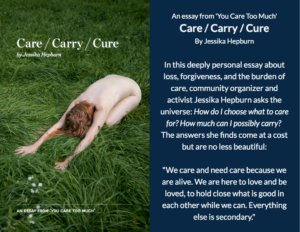{A sponsored post by Lorrie Everitt from Creative Bag} I left my corporate day job in 2005 to purse my dream of starting my own creative business. While working for over twenty years as a visual merchandiser and marketing director for a number of large retail companies, I learned a couple of valuable lessons about selling anything. First, more often than not, customers … [Read more...] about Creative Bag: Good things come in pretty packaging
{Part 4} Dig A Business Foundation: Intellectual Property
Also in this series: {Part 1: Website} | {Part 2: Contracts} | {Part 3: Structure} First off, I’m super proud of you for tackling each of the areas so far. We are going to wrap up with how you bring home the bacon: your business’ intellectual property. For the vast majority of creative businesses, your intellectual property is your most valuable business asset. It’s how … [Read more...] about {Part 4} Dig A Business Foundation: Intellectual Property
{Part 3} Dig A Business Foundation: Structure
Also in this series: {Part 1: Website} | {Part 2: Contracts} You are halfway through shoring up four critical aspects of your business foundation. Next we are going to focus on making sure your business structure is solid. This group of tasks is my least favorite; they have very little creativity and involve lots of red tape! But I do them because keeping my business … [Read more...] about {Part 3} Dig A Business Foundation: Structure
{Part 2} Dig A Business Foundation: Contracts
Also in this series: {Part 1} I’ll admit it; I’m a total contract nerd. I’m the one that goes off in the corner and reads through every last word when I’m buying a new phone and they hand me a contract to sign. So, I’m sad that contracts often get a bad rap. Since contracts really just define the boundaries of your relationship with the other party. They are there to say … [Read more...] about {Part 2} Dig A Business Foundation: Contracts
{Part 1} Dig A Business Foundation: Your Website
Also in this series: {Part 2: Contracts} | {Part 3: Structure | {Part 4:} Intellectual Property I bet you, like me, start off the New Year with huge dreams for what the year will hold. I like to pick a theme for the year. In 2015 I’m working on cultivating a strong community, both online and offline. So when I sat down and created my 2015 business plan, I made sure that the … [Read more...] about {Part 1} Dig A Business Foundation: Your Website

